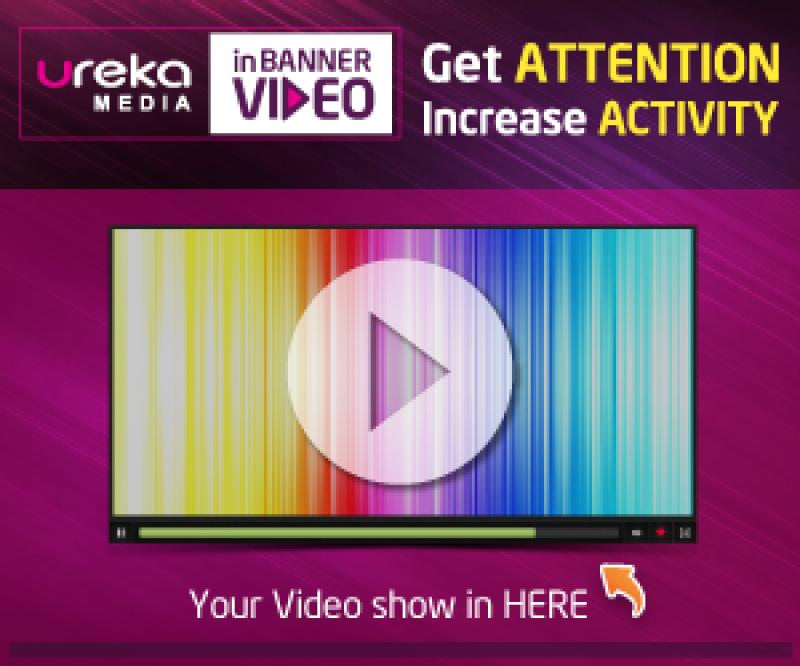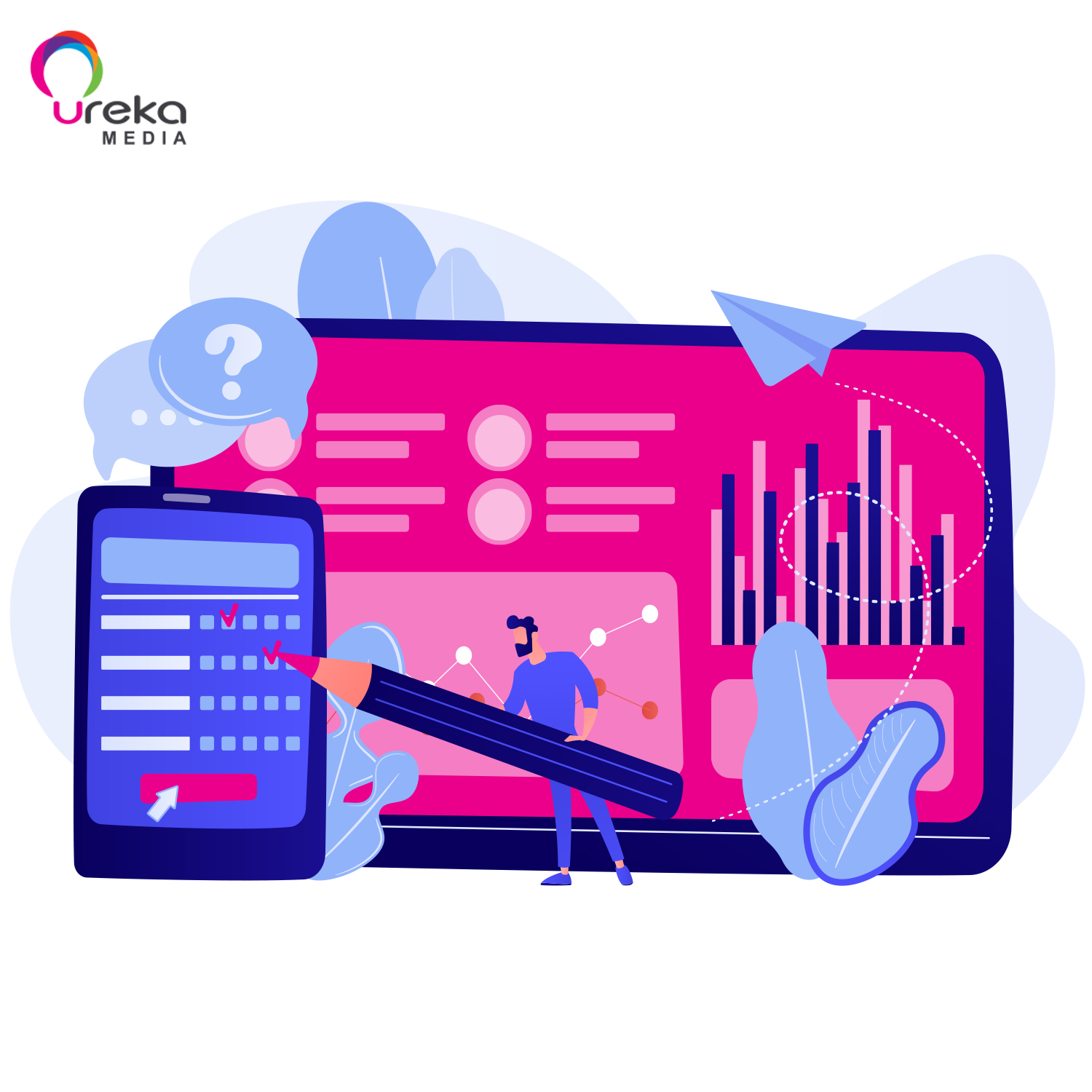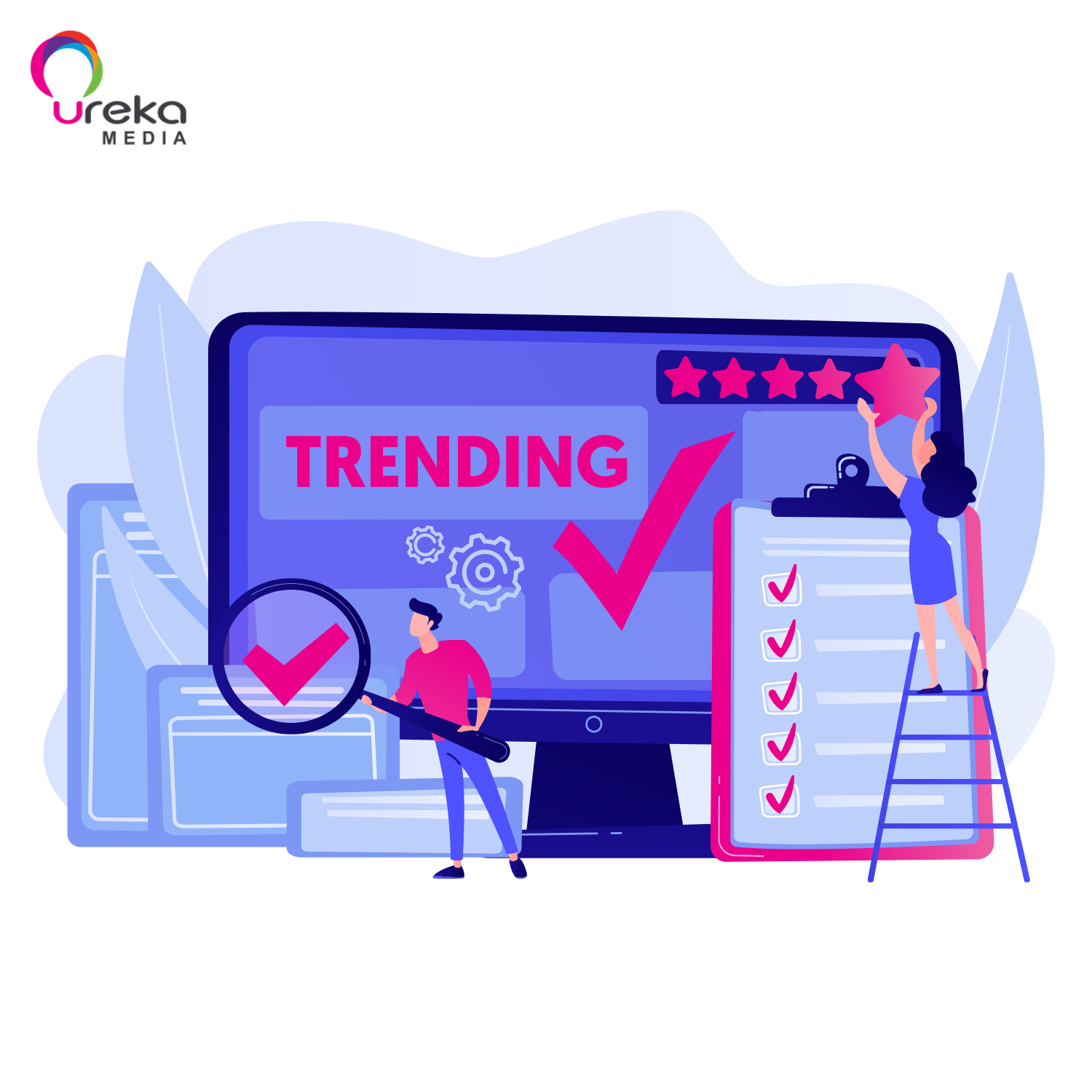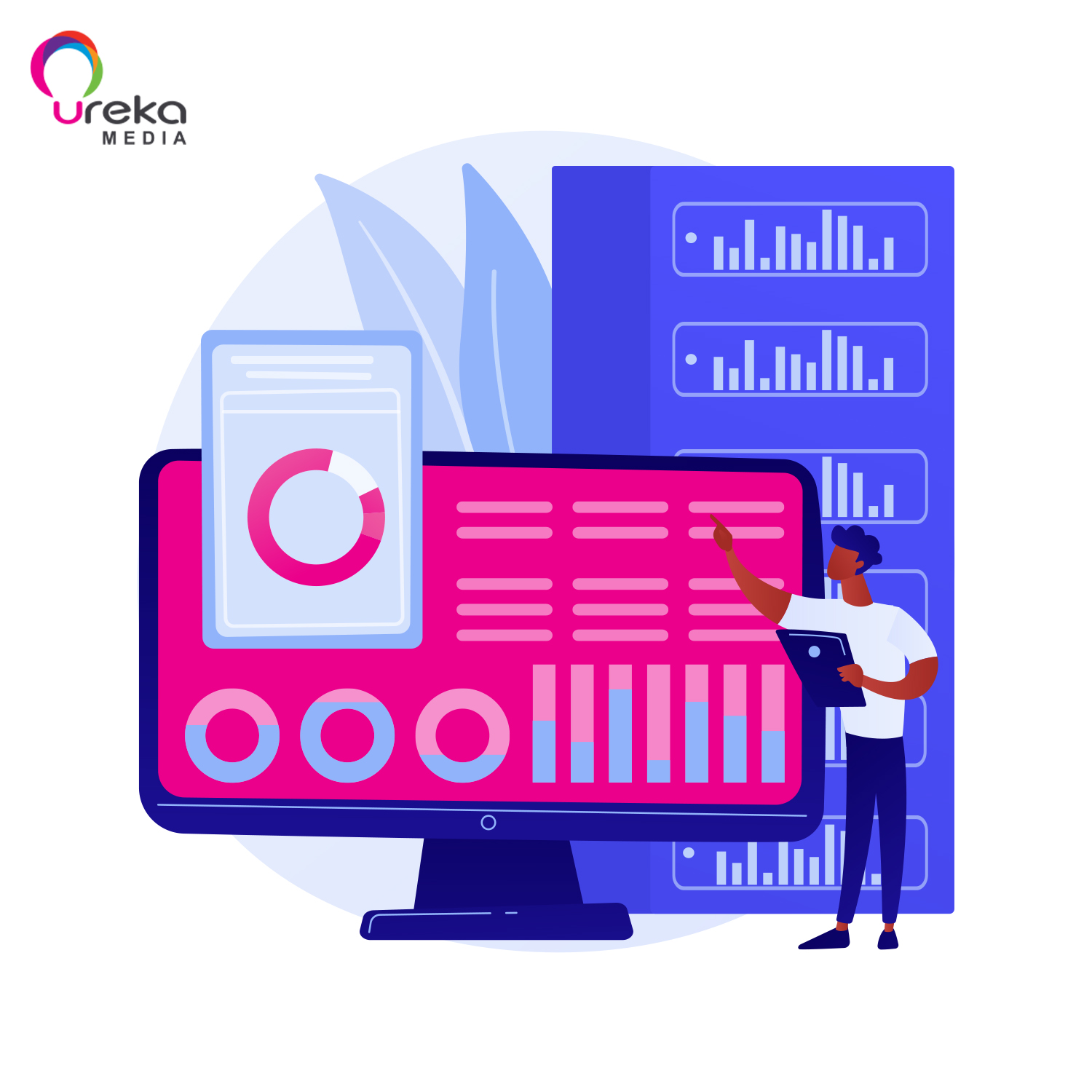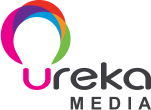In this article, we will share with you 8 exciting mobile rich media ads examples. We hope you’ll get inspired to create impressive masterpieces for your mobile advertising campaigns.
What are mobile rich media ads?
- A rich media banner contains video, image, social media components or any interactivity elements.
- It’s called ‘multimedia banner’ at times.
- The interactivity and engagement get users excited about your products or services.
- Rich media banner also has the power to drive users to actions three to six times more than standard banner.
- You get to track and monitor your audiences’ behaviours with its analytical components and tracking capabilities. This enables future ad campaigns planning and optimisation.
- It’s the best format for advertisers with ambitious goals and want to drive crazy levels of brand awareness.
- What’s more, rich media banners work wonders with your mobile ads.
- Last but not least, mobile advertising is a big deal now!
Pretty exciting, right? So, what makes rich media banners stand out from static banners?
Here’s a quick comparison.
Standard Banner Ads vs. Rich Media Banner Ads
|
STANDARD BANNER |
RICH MEDIA Banner |
|
Standard banners are simple GIF, JPEG or FLASH image formats. They usually include texts with visuals such as a 2D logo. |
Rich media banners are those ads with audio/video components in it, making them a lot more versatile than a still image. |
|
Small in file size, which is good for branding purposes. |
Huge in file size, but makes up for with its versatility. |
|
Less or almost no interactivity. In short, static. |
Highly interactive. In short, dynamic. |
|
No other technology can be used with standard banners. |
Rich media banner can be synchronised with technologies like JavaScript & HTML. |
|
They have only one interaction point; to be clicked. |
They can have a number of different interactions. |
Mobile rich media banners are amazing because of all the cool stuff we are about to show you. They are used customarily in rich media ad campaigns today. These examples are sure to inspire great ideas in you.
1. Capture attention with engaging videos from YouTube
This is by far one of the best mobile rich media ads feature that leave a lasting impression on your audience. Video advertising was the fastest growing digital advertising platform during 2012, and will continue to experience crazy growth up to 2018 and beyond.
There are many solutions to host your videos, nonetheless Youtube will be your best option to get your videos hosted and serve as an ad because you don’t have to pay for the bandwidth.
Apparently, when you read texts, you only remember 10% of it but, you will remember 95% of the video. Sounds crazy, but wait until you hear that around 52% of consumers are more confident to make online purchases after watching video ads.
Even an amazing 59% of senior executives prefer to watch a video about something than to listen or read texts.
Although video ads are the way to high engagement, we cannot expect users to view ads like movies. With consideration of the attention span of media consumers today, the ideal video length is within 30 seconds to 1 minute. Any longer than that, you will risk losing your prospects to the headlines of another article or the button of a game somewhere else. You may consider making videos that are non-skippable. It’s a good tactic to make them stay after capturing their attention. Here are some substantial reasons telling us why that’s a good trick.
Video advertising works best when your audience feels involved in the content, and that is best done through comedic, educational and inspirational themes.
Animated explainer videos are one of the best approaches, as they’re known to improve conversion rates by a whopping 20%!
And at the end of every YouTube video, you can add in a limited time Call-to-Action that encourages quick decision making from the viewers.
Plus, video ads can be played in almost any devices. And you don’t have to pay premium prices for their services. It is free!
So say your goodbyes to all the animated GIF images, because YouTube’s certainly one of the most engaging features to have, and it’s not going to burn a big hole in your pocket.
This gladly leaves you with the budget to spend more on other ad features, like the next example.
2. More images for interactivity with Image Gallery
On static banners, you only get to put one image. Just one.
With the image gallery feature, you can have multiple images within a single ad. It’s the best feature to give more variety and prolonged engagement with just visuals alone.
Think of it like a mini slideshow within an ad. And the best part is, they have hyperlink capabilities. When users click on those images within an ad, it can transfer them to your designated landing pages. Talk about killing two birds with one stone!
You can read more about the benefits of an image gallery here.
So if you are running a retail store or a restaurant, your best bet is to showcase all the best merchandises or promotional set meals as a series of images. This will allow your audience to browse through, giving them an engaging experience alongside multiple choices.
A great ad feature to offer multiple choices, which also increases the time spent on your ad.
Here’s another feature that captures the users’ attention.
3. Increase audience engagement with Facebook components
Everybody is on Facebook and they check their account frequently! This makes it the best social leveraging point to improve brand awareness and create a more personable audience engagement.
Facebook page ads take advantage of high social visibility and peer recommendations. And that increases engagement on your ad. More benefits of having a Facebook page for business use here.
This feature is so important now when back then deep linking was the only way to improve one’s social media presence. Users will be redirected to a mobile web browser and are forced to login to Facebook before being able to “like” or “share” something. It just pushes people away.
You never have to worry about that with Facebook as a rich media feature for your banner ads. Users can do all the “likes”, “comments” and “shares” within the ad itself, without needing to log in or out. Now, that’s huge!
Everyone enjoys “sharing” amazing things with friends, so offer a great deal to encourage the sharing. Social media is where great things can really go viral. And having Facebook “likes” can give you long-term values.
If you have yet to utilise Facebook as an ad feature for your rich media banners, you’re missing out on a lot of potentially great results!
4. Lead users to your outlets with Google Maps
When you have a huge chain of retail outlets and need your customers to find you easily, Google Maps as an ad feature is the answer for you.
This is especially important when your ad campaigns rely on audience targeting. Getting them to the right place at their utmost convenience with the ‘get directions’ capability to your nearest outlet.
The impact of location-based advertising is huge with the Google Maps feature.
Image of store locator
Image credit: Moball.tv
You are able to advise your potential customers to the nearest outlet with the get location feature. It’s done by detecting user’s IP address and a few different servers to locate the user’s current location and how far they are from your outlets.
Think of this ad feature as a mini GPS within your ad, once your users have made up their mind to make a physical purchase.
It is also known as geo-targeting.
5. Collect important data with Lead Capture
Without this feature in your mobile rich media ads, there would be little to no data about your audience to build on or for future ad campaigns optimisation.
Embedding a form into your ad unit enables you to capture leads. With the form, you can run various campaigns like customer feedback, register to download, answer quiz to win prizes, etc.
Remember, keep it simple to avoid losing your audience, because no one wants to spend several minutes to fill a form within an ad.
For example, you are planning to launch a new series of retail products. But you need your targeted audience’s information before proceeding on. That’s where a survey form can come in handy.
After obtaining the necessary data, you can conduct follow-up sessions. It is also important for keeping track of ad performances to do better ad campaigns in future.
If you are unsure how, here’s a step-by-step guide on effective lead capture landing page.
6. Allow customers to contact you easily with Click-to-Call
This is a very useful feature. When your users need additional information instantly, lead capture enquiry will be too slow while store locator won’t help at all.
Imagine that you run a gym training centre, with rich media banner ads promoting your business. Perhaps the users are interested in trying out your gym, but they lack sufficient information to make a confirmed decision. Plus, they only have a few minutes before they need to continue with work. Time is of the essence, so what’s the best way to reduce that waiting time to zero?
Say hello to the Click-to-Call feature. Allowing users to directly contact you through a phone call. It gives users the confidence to take action immediately to the benefit of your ad campaigns. It’s also a very convenient for those who are always in a hurry and on the move.
How the feature works is by accessing your phone’s dialer. And from there, calls can be made. These can be counted as successful ad conversions if done right. It’s that simple and straightforward.
It is deemed an important feature in the year 2015.
Advertisers having records of those phone conversations with customers can be a huge plus, and it’s now becoming a reality.
Here are more tips on how to optimise click-to-call.
Below are some images from on how phone calls can be stored and utilised.
7. Enhance user experience with 360 Product Viewer
Static images lose out due to non-interactivity, but this can be overcome with a 360-degree viewing.
More and more brands are adopting this component. Here’s one, a global car automaker utilising this feature to great effect.
If your targeted audience wants more product information and details, but texts seem boring or impossible on mobile ads, visual images appear to be the option. However, static images may appear boring (and risk losing their attention), 360-viewing is the answer.
This feature allows for a product image to be viewed from any angle within the 360 limit, and you can’t call this a 3D feature because the products involved looks so real it’s like actually looking at a real item than a computer generated one.
It may be quite a feat to pull something like this back then. However, today, a 360-degree viewing feature is getting easier to implement. And it’s all thanks to the combination of video and digital components.
It all started off with the simple video recording of a product item rotating in a full 360 rotation before that video file is converted into an image file that can be automatically or manually rotated as such.
You can learn more about this feature here.
8. Paradigm-shifting ad experience with Gyroscope
Have you ever wondered when you tilt your smart phones or tablets the screens or the objects inside adjust accordingly? It’s gyroscope technology. Typically, gyroscope technology is more popular for games, allowing you to control movement in your game by moving your device.
However, it has gradually gyrated into the advertising world and here’s an example of gyroscope ad for your reference.
Aside from the usual notifications from apps that show up on screens, users tend to usually tap on them in response. With gyroscope technology, users now can perform movements such as a “shake” to respond or a “tilt” to change the view. It’s not jut convenient without the need for fingers tapping, it also engages users with high interactivity.
The first mobile ad format utilising gyroscope technology is believed to have announced in 2013.
As the tech is evolving, shakes and tilts are not the only possibilities. Innovative concepts like ad units with 3D panoramic viewing products and interaction changes based on body movement are already made possible. This tech appears to usually work wonders with other features like 360-degree viewing.
Conclusion
Here are 8 ideas we’ve shared with you in a gist. We hope this will enrich your mobile rich media ads campaigns and let you enjoy high conversion success rate.
1. Capture attention with engaging YouTube videos
2. More images for interactivity with Image Gallery
3. Increase audience engagement with Facebook components
4. Lead users to your outlets with Google Maps
5. Collect important data with Lead Capture
6. Allow customers to contact you easily with Click-to-Call
7. Enhance user experience with 360 Product Viewer
8. Paradigm-shifting ad experience with Gyroscope
Source: mobileads.com




















![[Data Driven Marketing] Why marketers must be data-driven](https://urekamedia.com/uploads/uploads_image/20180620/20180620171546_63834.png)
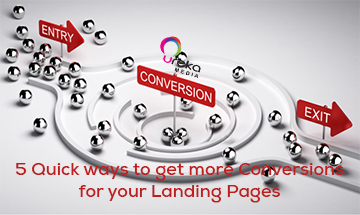
![[Data Driven Marketing] A Data-Driven Approach To Customer Retention](https://urekamedia.com/uploads/uploads_image/20180627/20180627102401_28870.png)

